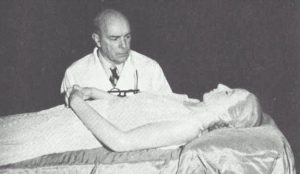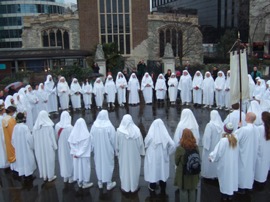From pyramids to hieroglyphics, it is no surprise that ancient Egypt is known for its strange, unique, and specific rituals that tie into their spirituality. Many of these rituals are precise and well thought out, in order to fit into their beliefs. One of the more important activities of the Egyptians was mummification. When the word is mentioned, frightening bodies wrapped in white strips of cloth is usually the first image that comes to mind. But why did the Egyptians take the time to prepare the deceased in this way, as well as make their tombs as glamorous as they did?

Many of us were taught about the Egyptians and their culture in primary school, but these lessons were fairly superficial in terms of the beliefs and reasoning behind their rituals. The ancient Egyptians had many views on death and the afterlife, all of which they took very seriously. According to them, humans all possess two souls or “doubles”; the “ka” and the “ba.”1 Both of these “doubles” were widely celebrated at an individual’s death. However the “ka” was the spirit that was more accommodated to in the tomb because it was understood that they needed to be nurtured in order for the deceased to be accepted into heaven, as well as for the prosperity of the people.2
The “ka” was said to be the spirit most associated with the identity of the deceased. A person would have no interaction with his or her “ka” until that individual had passed. Therefore, generally everything that was done to and for the body was also done for the “ka.”3 One of the reasons the preservation of the body (mummification) was performed was so the spirit would not be alone in the tombs.4 It was believed that the “ka” could bring the body back to life. People of the community would fill the tomb with items that they believed would please the spirit.5 Usually, these items included food, wine, and incense. The physical body was cleansed, dried, and wrapped to preserve the body and prevent the “ka” from a lack of nourishment.
Although it is interesting to learn the process of mummification and how it preserves the body, it is equally as satisfying to learn about the reasoning behind it. The Egyptians had many gods and spirits that contributed to their way of life, and the “ka” is no exception. It serves a basis for a good part of the mummification process, and gives more of an understanding as to why this process is necessary. 6
- E. A. Wallis Budge, Egyptian Religion (Routledge Revivals) : Egyptian Ideas of The Future Life (London: Routledge, 2013), 34. ↵
- John H. Taylor, Death and the Afterlife in Ancient Egypt (Chicago: University of Chicago Press, 2001), 19. ↵
- Budge, Egyptian Religion, 49. ↵
- Diana Craig Patch, Reflections of Greatness : Ancient Egypt at the Carnegie Museum of Natural History (Pittsburgh, Pa.: The Museum, 1990), 79. ↵
- Patch, Reflections of Greatness : Ancient Egypt at the Carnegie Museum of Natural History, 80. ↵
- Taylor, Death and the Afterlife in Ancient Egypt, 16-17. ↵



53 comments
Rachel White
Before reading this article I had limited knowledge on the reasoning behind mummification besides what I read in a previous Egyptian mummy article. This article still encompassed an area that I was not familiar with: the two souls that the Egyptians believed to live in each of our bodies. I was fascinated learning about these two different souls, “ka” and “ba,” and their relationship to humans. This article was very interesting and you kept my attention throughout the entire article. Great article and list of sources!
Victoria Sanchez
You are so right when you say that most of the lessons we had about ancient Egyptian mummies did not get into the technicalities of why mummification was so important. I had no idea that the ancient Egyptians believed in two souls, so reading about the “ka” and what was done to persevere that soul in the afterlife was new information, and definitely very interesting. Great job!
Christopher Repka
Nice article, Karissa! I didn’t know about the Egyptians’ belief in the two-part soul. Very nice photos you included, too.